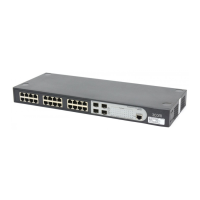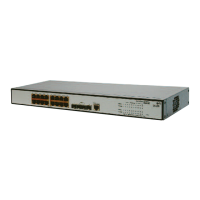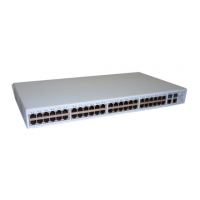114 CHAPTER 9: CONFIGURING IP AND MAC ADDRESS INFORMATION
■ Interface — Indicates the VLAN for which ARP parameters are
defined.
■ IP Address — Indicates the station IP address which is associated with
the MAC address.
■ MAC Address — Displays the station MAC address, which is
associated in the ARP table with the IP address.
■ Status — Displays the ARP table entry type. Possible field values are:
■ Dynamic — Indicates the ARP entry is learned dynamically.
■ Static — Indicates the ARP entry is a static entry.
2 Select the Interface to be removed.
3 Click Remove. The ARP interface is removed, and the device is updated.
Configuring
Address Tables
MAC addresses are stored in either the Static Address or the Dynamic
Address databases. A packet addressed to a destination stored in one of
the databases is forwarded immediately to the port. The Dynamic
Address Table can be sorted by interface, VLAN, and MAC Address. MAC
addresses are dynamically learned as packets from sources arrive at the
device. Addresses are associated with ports by learning the ports from the
frames source address. Frames addressed to a destination MAC address
that is not associated with any port, are flooded to all ports of the
relevant VLAN. Static addresses are manually configured. In order to
prevent the bridging table from overflowing, dynamic MAC addresses,
from which no traffic is seen for a certain period, are erased.
This section includes the following sections:
■ Viewing Address Table Settings
■ Viewing Port Summary Settings
■ Adding Entries into Address Tables
■ Defining Aging Time
■ Removing Address Table Ports
■ Removing Address Tables

